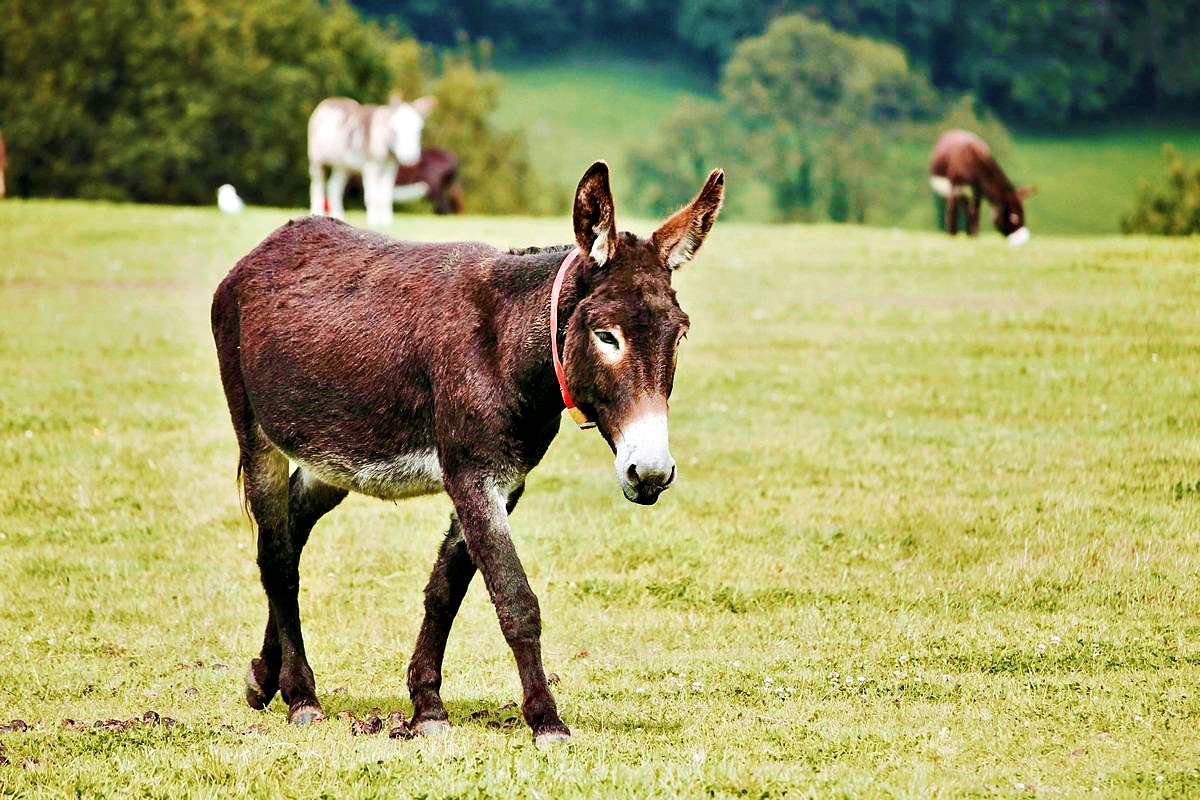🌏 The Invasion of Australia 🌏
In the vast and rugged outback of Australia, an unexpected invasion has taken place – an invasion of donkeys! 🐴🐴🐴 These resilient creatures, with their long ears and stubborn demeanor, have found themselves thriving in the harsh Australian environment, much like their ancestors did in the arid deserts of Africa.
The story begins centuries ago, when the first settlers arrived on the shores of the land Down Under, bringing with them their trusty donkey companions. These hard-working animals were invaluable assets, carrying supplies and aiding in the exploration of the untamed wilderness. Little did the settlers know that their loyal donkeys would one day become a formidable force, outnumbering many native species.
🏜️ Escape to the Wild 🏜️
As time passed, some of these domesticated donkeys managed to escape into the outback, rediscovering their wild roots. With no natural predators to speak of, save for the occasional dingo (Australian wild dog), the donkeys found themselves in a veritable paradise. The vast, arid landscapes of Australia’s interior provided the perfect environment for these hardy creatures to thrive, reminiscent of their ancestral homelands in Africa.
Unburdened by the constraints of human control, the donkeys reverted to their wild ways, establishing territories, forming herds, and reproducing at an astonishing rate. Within a few generations, their numbers swelled to astronomical proportions, reaching into the hundreds of thousands, if not millions. 😮
🥕 Clash of Ecosystems 🥕
As the donkey population exploded, their impact on the delicate Australian ecosystem became increasingly apparent. These voracious grazers competed with native species for scarce resources, stripping the land bare of vegetation and depleting precious water sources. Farmers and ranchers, whose livelihoods depended on the health of the land, found themselves in a desperate battle against the unstoppable tide of donkeys.
In response, various measures were taken to curb the donkey invasion. Some regions, like Western Australia’s Kimberley region, adopted a zero-tolerance policy, employing helicopters and sharpshooters to cull the donkey population from the air. This costly but effective approach saw the elimination of over 570,000 donkeys between 1978 and 2019, at a staggering cost of $78 million. 💸
🐎 The Unexpected Guardians 🐎
While some regions waged war against the donkeys, others found an ingenious solution – embracing the invaders and putting them to work as guardians of livestock. Farmers discovered that the mere presence of donkeys in their paddocks deterred dingoes and other predators from attacking their sheep and cattle. 🐑🐮
The reasons behind this unexpected alliance are rooted in the donkeys’ ancestral behavior. Descended from territorial African wild donkeys, these creatures have a deep-seated instinct to defend their territory against intruders, including canids like dingoes. Their formidable size, powerful kicks, and loud brays strike fear into the hearts of would-be predators, making them natural sentinels for vulnerable livestock.
As word of this unconventional security system spread, more and more farmers began adopting donkeys as cost-effective and low-maintenance guardians. The donkeys, once considered a menace, found a new purpose in protecting the very livestock they had once competed with for resources. 🤝
🧴 The Gelatin Conundrum 🧴
While the donkey invasion presented challenges, it also unveiled a lucrative opportunity for certain industries. The global demand for donkey-hide gelatin, a key ingredient in traditional Chinese medicine, has skyrocketed in recent decades. With China’s domestic donkey population dwindling, eyes turned to Australia’s abundant wild donkey herds as a potential source.
Companies specializing in gelatin production began lobbying the Australian government, proposing to harvest the donkeys for their hides. The prospect of tapping into this multi-million dollar industry proved tempting, and some regions, like the Northern Territory, began exploring the feasibility of such an endeavor.
However, the ethical and environmental implications of large-scale donkey harvesting remained a contentious issue. Animal welfare advocates raised concerns about the potential for inhumane treatment, while conservationists warned of the ecological consequences of depleting yet another species from the Australian landscape.
🌳 A Delicate Balance 🌳
As the debate over the fate of Australia’s donkey population rages on, one thing is clear: a delicate balance must be struck between preserving the nation’s unique ecosystems and addressing the challenges posed by invasive species. Perhaps the solution lies in a multi-faceted approach, combining humane population control measures with innovative utilization strategies that respect the intrinsic value of these resilient creatures.
The donkeys of Australia serve as a poignant reminder of the complex interplay between human activity, introduced species, and the natural world. Their story is a testament to the resilience of life and the unexpected consequences that can arise when new elements are introduced into delicately balanced ecosystems.
As we navigate the challenges of the 21st century, it is crucial that we learn from the lessons of the donkey invasion, approaching ecological issues with wisdom, compassion, and a deep respect for the intricate web of life that sustains us all. 🌍
Copyright © 2025 Hea1th.net

